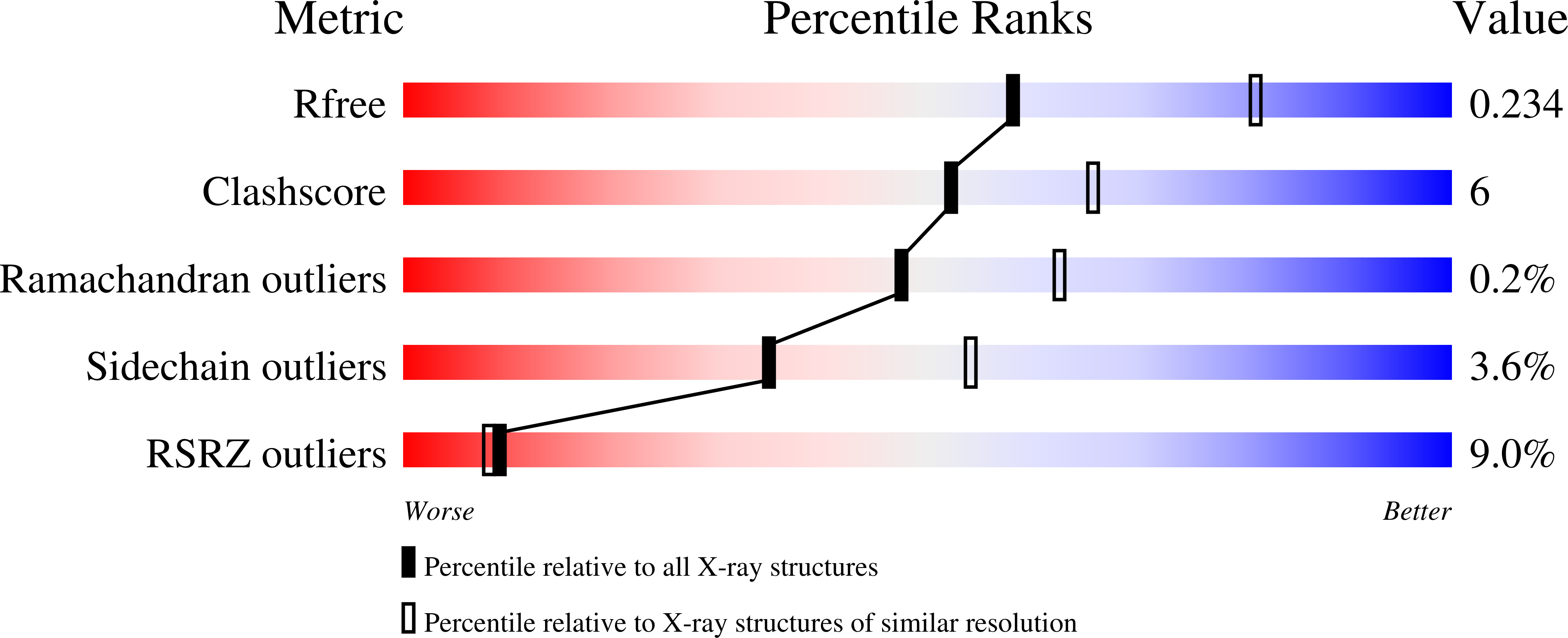MerA functions as a hypothiocyanous acid reductase and defense mechanism in Staphylococcus aureus.
Shearer, H.L., Loi, V.V., Weiland, P., Bange, G., Altegoer, F., Hampton, M.B., Antelmann, H., Dickerhof, N.(2023) Mol Microbiol 119: 456-470
- PubMed: 36779383
- DOI: https://doi.org/10.1111/mmi.15035
- Primary Citation of Related Structures:
8AJJ, 8AJK - PubMed Abstract:
The major pathogen Staphylococcus aureus has to cope with host-derived oxidative stress to cause infections in humans. Here, we report that S. aureus tolerates high concentrations of hypothiocyanous acid (HOSCN), a key antimicrobial oxidant produced in the respiratory tract. We discovered that the flavoprotein disulfide reductase (FDR) MerA protects S. aureus from this oxidant by functioning as a HOSCN reductase, with its deletion sensitizing bacteria to HOSCN. Crystal structures of homodimeric MerA (2.4 Å) with a Cys 43 -Cys 48 intramolecular disulfide, and reduced MerACys 43 S (1.6 Å) showed the FAD cofactor close to the active site, supporting that MerA functions as a group I FDR. MerA is controlled by the redox-sensitive repressor HypR, which we show to be oxidized to intermolecular disulfides under HOSCN stress, resulting in its inactivation and derepression of merA transcription to promote HOSCN tolerance. Our study highlights the HOSCN tolerance of S. aureus and characterizes the structure and function of MerA as a major HOSCN defense mechanism. Crippling the capacity to respond to HOSCN may be a novel strategy for treating S. aureus infections.
Organizational Affiliation:
Centre for Free Radical Research, Department of Pathology and Biomedical Science, University of Otago Christchurch, Christchurch, New Zealand.
















